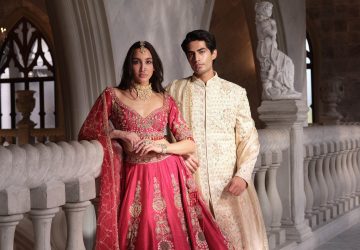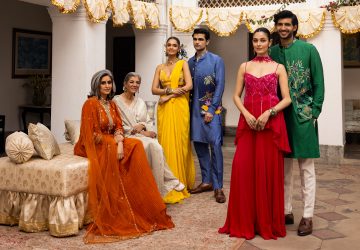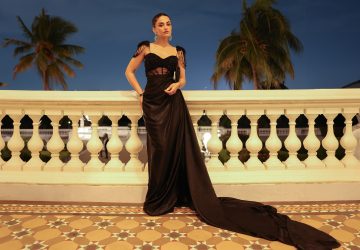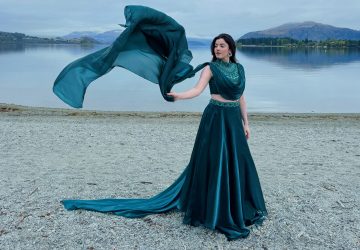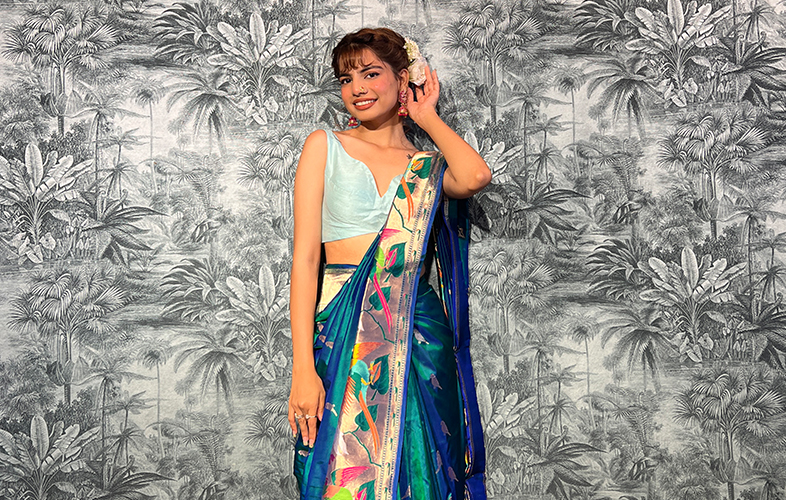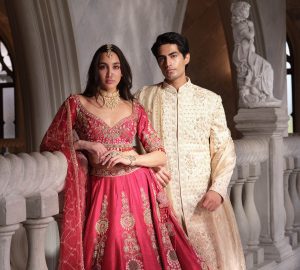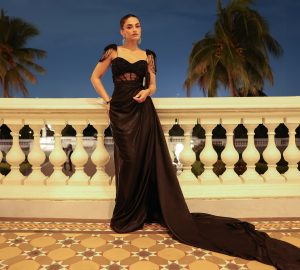A saree is India’s most authentic and classy attire, which has been a favorite for decades and has also gained popularity on the global platform. The Indian market has a large variety of sarees available in different hues and fabrics. One can choose from soft pastels to bright, fiery shades and from rough and tough cotton fabrics to delicate chiffons and rich silk. The magical garment it is, a saree requires a unique draping process in different states and regions of India. Yes, a saree can be draped in innumerable ways depending on the place, fabric, length and width of the garment, and the personality and comfort of the person wearing it. In fact, different states of India have their own particular and unique styles of tying sarees. Let’s have a look at 11 famous Indian traditional saree draping styles.
Classic Saree Draping Styles Across The Different States In India
With these unique saree draping ways, you can surely turn some heads. Have a look and turn up like a pro at traditional gatherings, weddings, and festivals.
1. Nauvari Style, Maharashtra
The Maharashtrian Nauvari (nine-yard saree) style is a unique way of draping a saree and is also comfortable and liberating in its own way for easy leg movement. What sets it apart from the other styles is that it is worn like a dhoti with one end going ‘front to back’ between the legs, and then tucked around the waist, while the other end is draped like a normal saree. It is commonly worn in Maharashtra’s peppy folk dance Lavani. The Brahman style, Lavani style and Marathi drape are all part of this cool style of wearing and flaunting a saree and each of it looks exceptional.
2. Gochi Kattu, Telangana Style
This gorgeous style of saree draping is popular amongst the Golla shepherd community of the Telangana region. This style requires a 7.5 meters long saree for a dazzling and traditional look. The usage of a bright-colored Kanjeevaram silk saree in this specific drape looks very graceful and splendid at weddings and other formal events. A long palla is also one significant and special feature of this authentic style. To enhance your overall look, go for traditional gold jewelry along with one of the Andhra style sarees.
3. Atpoure Saree, West Bengal
From an amazing world of stunning sarees, one is Atpoure saree popularly known as the Bengali saree, and can be easily recognized by its exclusive draping style with two pallus coming from back to front. Bengali women edge up their classic and crisp cotton saree by throwing the ends of the pallu over their shoulder with a bunch of keys hanging to it. The red and white Atpoure draping symbolizes their power and supremacy. The traditional Bengali saree comes in white color with a red border which looks very royal and majestic and has therefore gained popularity amongst women of other communities as well. Bollywood fashionistas like Aishwarya Rai, Madhuri Dixit, Deepika Padukone, and Vidya Balan have very often stolen our hearts dressed up in typical Bengali saree along with a big round red bindi and a low tied bun. Bengali saree is a big hit during Durga Puja festival.
4. Pavadai Dhavani, For Young South Indian Girl
Our modern day ‘lehenga style saree’ looks actually inspired by Pavadai Dhavani also known as Langa Voni saree style. Popularly known as ‘two-piece saree or half saree’, Pavadai Dhavani is an ethnic and cultural garment worn in larger parts of South India. It comprises a skirt tied around the waist and a Voni which is draped diagonally over a choli. Pavadai Dhavani can be worn on both formal and semi-formal occasions and can be carried around easily, offering young girls both comfort and style. The three-piece outfit can be customized to one’s liking and a mix and match of colors can also make the outfit bright and vibrant. A blingy belt around the waist, embellished waistband and some delicate jewelry can ace up the woman’s saree game.
5. Iyer and Iyengar: Madisaru, Tamil Nadu
This style of saree draping common in Tamil Nadu symbolizes the male and female forces as it is a combination of a saree and a dhoti. Draping this style is a little tricky but definitely fun as it involves wearing the lower half like a dhoti and the upper half like a normal pleated saree. However, this style does not require a blouse or petticoat. Also, their trouser-like drape does not come in the way of their comfort or restrict any kind of movement. The brave and fondly remembered Rani Laxmi Bai was always seen wearing this nine-yard Madisaru and was an inspiration for women down South. This offbeat style can be worn at festivals and weddings to break the monotony and look super classic, traditional as well as chic.
6. Seedha Pallu Style, Gujarat
Seedha Pallu style is the most common and one of the easiest draping styles worn by the people of Gujarat and Uttar Pradesh and Odisha. It is easy to drape as well as carry during long wedding celebrations as well as other events. This drape allows you to show off the intricate embroidery done on the pallu and adds glam to your cultural and ethnic look. The Gujarati style saree wearing is usually preferred by the elderly ladies of Haryana and Rajasthan as well as it does not put any burden on the shoulders and allows free hand movement. Nita Ambani is one such example of a powerful and fashionable woman who is often seen wearing this style very gracefully and subtly. There is no restriction on the fabric, design, and colors to be used for this versatile style of draping.
7. Coorgi Style, Karnataka
Coorgi style of draping is a very practical, non-fussy, and no-nonsense style that is made keeping in mind the geographical condition of the famous hill station Coorg in Karnataka. This method of saree draping makes climbing the hilly slopes of the area easy for women. The drape style is also known as the Kodagu style saree or Kodava attire. A special feature of this style of draping is that it is worn along with a matching headcloth. With pleats at the back and the end of the saree brought from the back under both shoulders and placed on the right shoulder with a knot, this style is easily recognizable and cannot go unnoticed. Brides who like to experiment are seen flaunting their red and gold Kanjeevarm silk sarees in this exquisite drape.
8. Gol Saree, Parsi Community
The unique saree draping is a part of The Parsi community’s set of customs and traditions that they follow religiously. Draping a Parsi saree is also called the Gol saree for its specific way of being draped and carried. Georgette, embroidered or light chiffon sarees are perfect for trying out this style of drape. What makes this draping style stand out from the other styles is the way the pallu is worn. Instead of going from front to back it is taken from the back and draped over the blouse so that it falls close to the hem. The embroidery on the pallu gives it a formal look and a sense of sophistication. You can rock this look with a delicate pearl string and soft makeup.
9. Nivi And Kappalu, Andhra Pradesh
There is no fun in just following the crowd. Break the rules, innovate, and just go out of your comfort zone and make your saree-wearing interesting with Nivi and Kappalu saree popular in Andhra Pradesh. Unlike normal sarees that are wrapped from right to left, this distinct style requires women to drape a saree from left to right. In this stylish drape, you have the option of letting the pallu hang on the right shoulder or wrapping it around the shoulder. Another interesting thing about the Kappalu style is that the saree is pleated behind and is draped around the body twice. So let us ditch the regular draping styles and try these new styles in the upcoming festivities.
10. Namboothiri Style, Kerala
There is not one but myriad ways of draping a Kerala saree. One most popular is Namboothiri style which is the traditional attire of the Namboothiri or Brahmin community in Kerala. It is not a very common site in Kerala and is usually seen during the Onam dance and other folk dances during festivities. The white and golden combo of the saree can never go wrong during the festivals of the state. The Namboothiri style is a two-piece saree, where the larger piece of cloth is inserted into the petticoat making the golden border visible on the left while the smaller piece is tucked into the blouse. This accentuates the sleek and slender body of a woman making them look, feel, and flaunt their best.
11. Mekhela Chadar, Assam
Those who have heard about it but never experimented with it must give Mekhela Chadar or Mekhela Sador style saree draping a try. It is exclusively worn by young Assamese girls. This handloom saree comprises two-piece. The bottom portion which is draped from the waist downwards is called the Mekhela and has pleats in a criss cross manner. The chadar is the other part that covers the upper body and is draped on the shoulder. The length of the chadar usually is 2.75 meters and the length of the Mekhela is 1.75m, which is very less in contrast to the other flowy sarees worn in different cultures. These elegant sarees reflect the personality of the non-flamboyant people of Assam. These sarees are made of cotton, muga and pat silk and are available in a plethora of colors. One can try this style at some events for a rustic look.
The saree, in whichever way it may be draped, is a symbol of grace and elegance. It adds panache to the personality of the person wearing it. We have read about various saree draping techniques and even if not worn regularly, they can be worn at special events as a mark of respect towards our tradition and culture followed across the nation. So let us visit our very famous and trusted KALKI to shop for beautiful and rich sarees and upgrade our wardrobe. Trust me, you will be spoilt for choice and the plethora of options will leave you bewildered.
Also Read: Steal The Spotlight: Fashion Tips For The Groom’s Family
![]()
